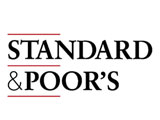The Fed Says That There Is Slow To Moderate Growth in 11 Districts
Post Views 0The Federal Reserve said that the economy expanded at a ”moderate” pace in 11 of the 12 districts, led by gains in manufacturing and consumer spending.
”Overall economic activity increased at a slow to moderate pace since the previous report across all Federal Reserve districts expect St. Louis, which reported a decline in economic activity,” the Fed said in its Beige Book surveyed released yesterday in Washington covering the month of October and the first half of November.
The report reinforces the central bank’s view that the economy, while strong enough to skirt a recession, remains much too weak to bring down an unemployment rate stuck near 9 percent or higher for more than two years. According to the minutes, at their last meeting of November 1-2, some Fed policy makers said that the central bank should consider easing policy further.
Today’s report said that ”hiring was generally subdued” and that residential real estate ”generally remained sluggish.” In the previous Beige Book report that was released on October 19, the Fed said that the economy was expanding ”although many districts described the pace of growth as ‘modest’ or ‘slight.”’
The Beige Book underscores other recent reports showing that ”the US economy is in a much better place, no chance of a double dip recession,” Allen Sinai, who is the president of Decision Economics Inc. in New York, said in an interview shown on Bloomberg Television. ”Jobs will keep going up, the unemployment rate will keep going down, but very, very slowly.”
The anecdotal survey, that is released two weeks before each policy meeting, is based on the information that was gathered by officials at the Fed’s 12 regional banks. The report from Wednesday was compiled by staff at the Minneapolis Fed.
Yesterday, the Fed, along with five other central banks, said that it would make it cheaper for banks to borrow dollars in emergencies in a global effort to ease Europe’s sovereign-debt crisis.
In its November 2 statement, the Fed said that ”there are significant downside risks to the economic outlook, including strains in global financial markets.” The policy makers have identified the European sovereign debt crisis as one of the risks to the U.S. economy.
Stocks rallied around the world, commodities surged and yields on most European debt fell on the show of force from central banks aimed at easing strains in financial markets. The cost for European banks to borrow dollars dropped from the highest in three years, tempering concerns about the euro crisis getting worse.
At 2:18 pm in New York, the Standard & Poor’s 500 Index rose 3.3 percent to 1,234.28. The yield on the 10-year Treasury note climbed 0.08 percentage points to 2.07 percent.
The US economy has been roiled this year by other international shocks, including the earthquake and tsunami in Japan that disrupted global supply chains, and a surge in oil prices exacerbated by the political upheaval in the Middle East.
The Fed Says That There Is Slow To Moderate Growth in 11 Districts by Harrison Barnes



 November Posts Another Strong Job Report
November Posts Another Strong Job Report  Top Canadian Companies You Want to Work For
Top Canadian Companies You Want to Work For  Amazon May Have a Better Grasp on Workplace Culture
Amazon May Have a Better Grasp on Workplace Culture  Expected Changes in 2016 to the Workplace
Expected Changes in 2016 to the Workplace